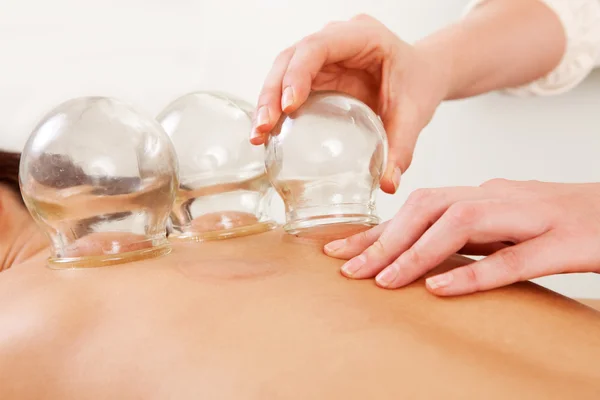How Long Does It Take?
Typically, you leave the cups in place for anywhere from five to 20 minutes while relaxing. Your acupuncturist might also apply oil to the skin to help the cups slide over areas needing treatment, usually on the back. Additionally, your practitioner might use four, six, or 10 cups depending on the severity of the condition being treated.
What Does Cupping Treat?
Frequently applied after acupuncture, cupping treats sprains, soft tissue injuries, fluid retention in the lungs, bronchitis, congestion, asthma, and chronic cough. Cupping is also recommended for treating gastrointestinal disorders. It alleviates swelling and pain by addressing a variety of acute ailments through the removal of stasis, or energy blockages. Cupping therapies often follow the acupoint selection pattern used in acupuncture therapy, with back points in fleshy areas of the body as preferred sites. Let’s discuss how increased blood flow into the cupping area allows the body region to heal more quickly and brings toxins to the surface, which can be released through the pores.
What is Happening to My Body?
The cupping technique activates your lymphatic system, causing your tissue to release toxins and clearing any energy blockages. If you suffer from acute or chronic deep tissue pain, your acupuncturist might use cupping in addition to your traditional acupuncture treatment.
Are there different types of Cupping?
The short answer is: Yes! There are several cupping techniques that can be used depending on what condition is being treated.
- Dry cupping: defined as generating negative pressure inside the cups with fire, a manual pump or electrical suctioning (also called retained or static cupping).
- Flash cupping: a practitioner uses quick suctions of light to medium pressure for less than 30 seconds at a time.
- Needle cupping: acupuncturist applies short acupuncture needles and then places the cups on the areas to be treated.
- Herbal cupping: practitioner boils an herbal solution, soaks bamboo cups, and then applies the slightly cooled cups to the skin.
- Electrical simulation cupping: this technique uses transcutaneous electrical nerve stimulation (TENS). This technique is commonly used to treat muscular pain and to target specific points.
Lastly, ask your acupuncturist if cupping is the right technique for you. They will conduct a thorough health history and answer any questions you might have. The combination of traditional acupuncture and cupping might be the winning combination you have been searching for!







Leave A Comment